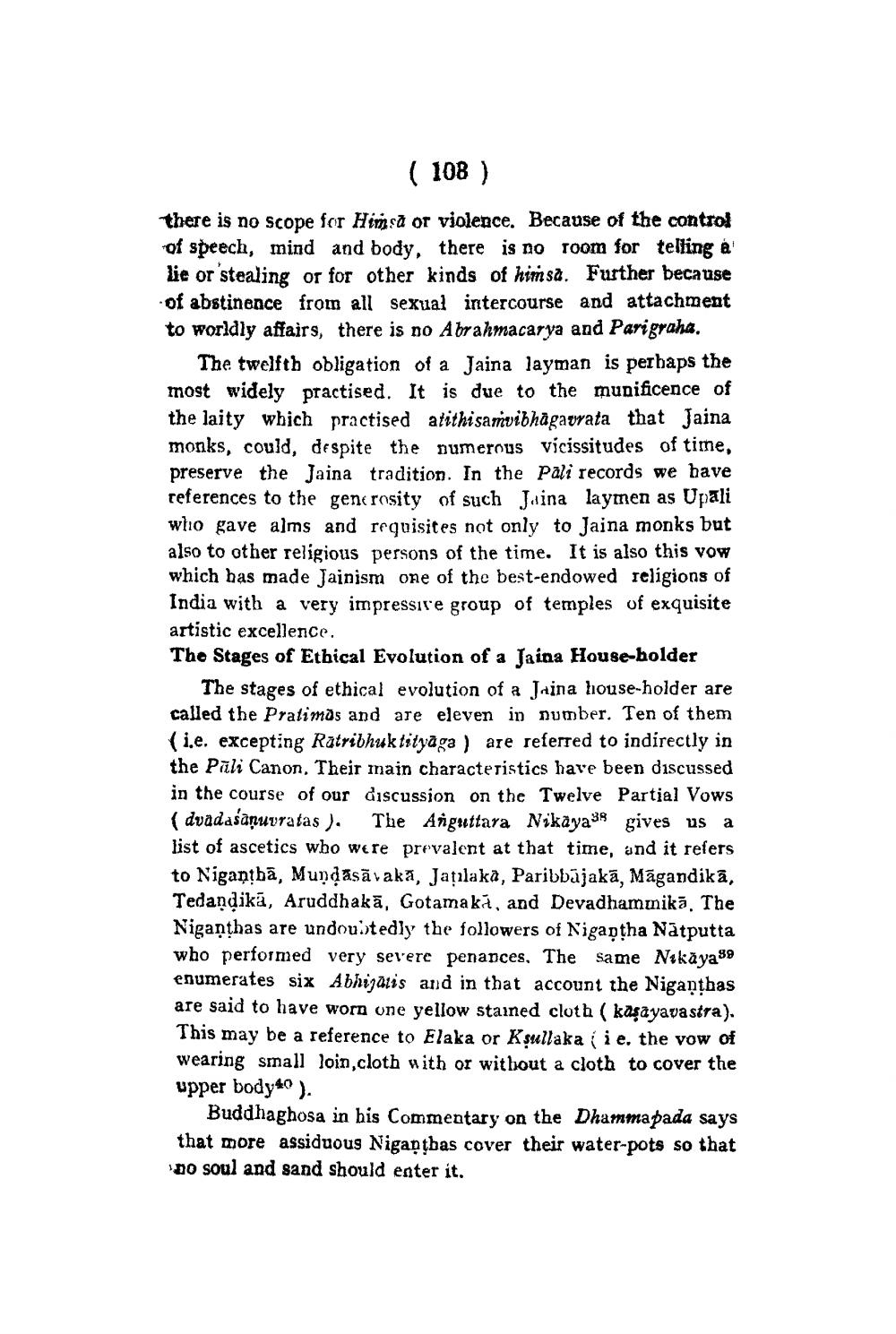________________
( 108 )
there is no scope for Himsa or violence. Because of the control of speech, mind and body, there is no room for telling a lie or stealing or for other kinds of himsa. Further because of abstinence from all sexual intercourse and attachment to worldly affairs, there is no Abrahmacarya and Parigraha.
The twelfth obligation of a Jaina layman is perhaps the most widely practised. It is due to the munificence of the laity which practised atithi samvibhāgavrata that Jaina monks, could, despite the numerous vicissitudes of time, preserve the Jaina tradition. In the Pali records we have references to the generosity of such Jaina laymen as Upali who gave alms and requisites not only to Jaina monks but also to other religious persons of the time. It is also this vow which has made Jainism one of the best-endowed religions of India with a very impressive group of temples of exquisite artistic excellence.
The Stages of Ethical Evolution of a Jaina House-holder
The stages of ethical evolution of a Jaina house-holder are called the Pratimas and are eleven in number. Ten of them (i.e. excepting Ratribhuktityaga) are referred to indirectly in the Pali Canon. Their main characteristics have been discussed in the course of our discussion on the Twelve Partial Vows (dvadasaṇuvratas ). The Anguttara Nikaya38 gives us a list of ascetics who were prevalent at that time, and it refers to Nigantha, Munḍāsāvakā, Jaṭilaka, Paribbājakā, Māgandikā, Tedandika, Aruddhakā, Gotamaka, and Devadhammika. The Niganthas are undoubtedly the followers of Nigantha Natputta who performed very severe penances. The Same Nikaya39 enumerates six Abhijatis and in that account the Niganthas are said to have worn one yellow stained cloth ( kaşayavastra). This may be a reference to Elaka or Kṣullaka (ie. the vow of wearing small loin,cloth with or without a cloth to cover the upper body40).
Buddhaghosa in his Commentary on the Dhammapada says that more assiduous Niganthas cover their water-pots so that no soul and sand should enter it.




